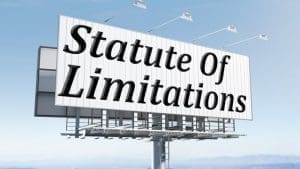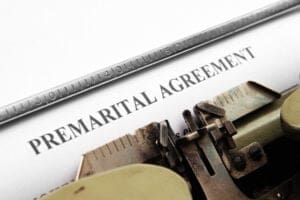Construction Fall Accident Lawsuit: Essential Legal Framework for American Workers
Individuals injured in construction falls frequently ask, “Can I sue for a construction accident even if I’m covered by workers’ compensation?” The answer is yes—construction fall accident lawsuits often provide additional legal remedies beyond workers’ compensation, particularly when third parties, defective equipment, or safety violations contribute to accidents. Unlike standard workplace injuries limited to workers’ compensation benefits, construction site accidents may involve multiple liable parties including general contractors, subcontractors, equipment manufacturers, and property owners.
Personal injury litigation in construction falls represents one of the most complex areas of tort law, requiring sophisticated understanding of federal safety regulations, state liability statutes, and the intricate contractual relationships that characterize modern construction projects. The legal framework balances worker protection with industry accountability while ensuring proper compensation for catastrophic injuries common in construction accidents.
What Constitutional Principles Guide Construction Accident Litigation?
Due process protections under the Fifth and Fourteenth Amendments establish the constitutional foundation for construction accident litigation, ensuring that injured workers receive fair treatment in civil proceedings while protecting defendants’ rights to proper legal procedures. These fundamental protections require that liability determinations follow established legal standards while respecting property rights and contractual relationships.
The constitutional framework recognizes that construction work involves inherently dangerous activities requiring enhanced safety protections, balanced against principles of individual responsibility and free enterprise. Courts must consider both worker safety rights and business operational freedoms when interpreting liability standards and damage awards.
Federal Regulatory Authority and State Implementation
Occupational Safety and Health Administration (OSHA) regulations establish federal safety standards that create baseline requirements for construction site safety, though state courts retain primary jurisdiction over civil liability determinations. OSHA violations often provide crucial evidence of negligence in construction accident litigation while demonstrating industry-standard safety requirements.
State courts handle most construction accident cases under state tort law principles, though federal jurisdiction may apply when cases involve interstate commerce, federal construction projects, or constitutional challenges to state liability limitations. This division of authority allows states to develop liability frameworks suited to local legal traditions while maintaining federal oversight of safety standards.
Interstate construction projects create jurisdictional complexity when accidents involve workers from multiple states or when projects span state boundaries. These situations require careful analysis of applicable law and venue selection to ensure optimal legal forums for plaintiff interests.
How Do State Laws Create Different Liability Standards for Construction Accidents?
State variations in construction liability reflect different policy approaches to balancing worker protection against industry operational needs. Some states maintain strict liability standards for construction site safety, while others apply comparative negligence principles that may reduce recovery based on worker fault contribution.
New York’s Labor Law Section 240, known as the “Scaffold Law,” imposes absolute liability on contractors and property owners for gravity-related construction accidents, providing some of the strongest worker protections in the nation. This approach contrasts sharply with states that apply traditional negligence standards requiring proof of specific safety violations.
Regional Approaches to Construction Liability
Southern states generally favor approaches that balance worker protection with business operational flexibility, applying comparative negligence standards that consider worker responsibility alongside employer negligence. States like Texas and Florida maintain business-friendly environments while providing reasonable worker protection through traditional tort principles.
Western jurisdictions often emphasize comprehensive safety regulation enforcement, with California maintaining strict liability standards for certain construction activities while requiring extensive safety compliance from all project participants. These approaches reflect regional priorities regarding worker safety versus business regulation.
Northeastern states typically provide the strongest worker protections through enhanced liability standards and generous damage awards, reflecting regional policy preferences for worker advocacy and comprehensive injury compensation systems.
When Do Construction Workers Have Rights Beyond Workers’ Compensation?
Third-party liability represents the most common avenue for construction workers to pursue civil litigation beyond workers’ compensation benefits. When parties other than direct employers contribute to construction accidents, workers may pursue additional compensation through personal injury lawsuits while maintaining workers’ compensation benefits.
Defective equipment cases allow workers to sue manufacturers of faulty construction equipment, scaffolding, or safety gear that contributes to accidents. These product liability claims operate independently of workers’ compensation and can provide substantial additional recovery for injured workers.
Contractual Relationship Complexity
General contractor liability may extend to subcontractor employees when general contractors retain control over safety conditions or fail to enforce adequate safety standards on construction sites. These relationships require careful legal analysis to establish duty relationships and liability theories.
Property owner responsibility varies by state but often includes duties to maintain safe working conditions and ensure compliance with applicable safety regulations. Property owners may face liability for accidents caused by dangerous site conditions or inadequate safety oversight.
Multi-employer worksites create complex liability relationships when multiple contractors work simultaneously on construction projects, requiring analysis of contractual obligations, safety responsibilities, and coordination duties that may contribute to accident causation.
What Evidence Is Critical in Construction Fall Accident Cases?
OSHA compliance documentation provides crucial evidence regarding industry safety standards and potential violations that contributed to accidents. This documentation includes safety inspection reports, violation citations, and compliance records that establish baseline safety requirements.
Site safety plans and implementation records demonstrate whether contractors followed established safety protocols and industry best practices. These documents often reveal gaps between written policies and actual site conditions that contributed to accident causation.
Technical and Expert Evidence
Accident reconstruction analysis helps establish how falls occurred and identify contributing factors including equipment failure, safety system inadequacies, or environmental hazards. Expert testimony proves essential for complex cases involving multiple potential causes or disputed liability theories.
Medical evidence establishing injury severity and causation relationships supports comprehensive damage claims while distinguishing accident-related injuries from pre-existing conditions. Construction accidents often cause severe injuries requiring extensive medical treatment and long-term care planning.
Industry standard testimony from safety experts demonstrates whether construction practices met applicable safety standards and identifies specific violations that contributed to accidents. This testimony helps establish negligence while supporting damage claims based on preventable injuries.
How Do Federal Safety Regulations Impact Construction Accident Litigation?
OSHA fall protection standards under 29 CFR 1926 Subpart M establish comprehensive requirements for construction site fall protection, creating specific legal duties that may form the basis for negligence claims when violations contribute to accidents. These federal standards provide objective criteria for evaluating construction site safety adequacy.
Regulatory violation evidence supports negligence claims by establishing that defendants failed to meet federally mandated safety standards, though regulatory compliance alone doesn’t necessarily preclude liability when additional safety measures were reasonable and necessary.
Industry-Specific Safety Requirements
Scaffolding regulations impose detailed requirements for scaffold construction, inspection, and use that frequently factor into construction fall accident cases. Violations of these specific requirements often provide strong evidence of negligence when scaffold-related accidents occur.
Personal protective equipment requirements mandate specific safety equipment and training that must be provided to construction workers. Failures to provide adequate PPE or proper training create liability exposure when these failures contribute to accident causation.
Site inspection obligations require regular safety evaluations and hazard correction that, when neglected, may support negligence claims based on foreseeable accident risks that proper inspection would have identified and addressed.
What Types of Damages Are Available in Construction Fall Lawsuits?
Economic damages in construction fall cases include medical expenses, lost wages, reduced earning capacity, and rehabilitation costs that often reach substantial amounts due to the severe nature of construction accident injuries. Professional economic analysis ensures comprehensive damage calculations that reflect both current and future financial impacts.
Non-economic damages for pain and suffering, emotional distress, and loss of quality of life provide additional compensation for the intangible harms that construction accidents cause. These damages often represent significant portions of total recovery, particularly in cases involving permanent disabilities or disfigurement.
Punitive and Exemplary Damages
Willful safety violations may support punitive damage claims when employers or contractors demonstrate deliberate indifference to worker safety through egregious conduct. These damages serve both compensation and deterrence purposes while reflecting societal condemnation of unsafe practices.
Gross negligence standards vary by state but generally require proof of extreme carelessness or reckless disregard for safety that goes beyond ordinary negligence. Meeting these standards can significantly increase damage awards while demonstrating particularly culpable conduct.
Corporate responsibility considerations increasingly influence damage awards as courts recognize the deterrent effect of substantial monetary penalties on large construction companies with capacity to implement comprehensive safety programs.
How Do Workers’ Compensation Laws Interact with Civil Lawsuits?
Exclusive remedy provisions in workers’ compensation law generally prevent employees from suing their direct employers for workplace injuries, though exceptions apply when employers engage in intentional misconduct or when third parties contribute to accidents.
Coordination of benefits requirements prevent double recovery for the same damages while ensuring that workers receive comprehensive compensation through combined workers’ compensation and civil litigation recoveries.
Strategic Litigation Considerations
Lien resolution becomes necessary when workers’ compensation carriers assert reimbursement rights against civil lawsuit recoveries, requiring negotiation to maximize net recovery while satisfying statutory lien obligations.
Settlement timing considerations affect the interplay between workers’ compensation benefits and civil lawsuit resolution, as premature settlement may compromise ongoing medical benefits or future compensation opportunities.
Subrogation rights allow workers’ compensation carriers to pursue third parties responsible for accidents, creating coordination issues between carrier interests and employee recovery rights that require careful legal management.
What Role Do Construction Contracts Play in Accident Liability?
Indemnification clauses in construction contracts often allocate liability between project participants, though these provisions cannot eliminate all liability and may be unenforceable when they violate public policy or statutory requirements.
Insurance requirements specified in construction contracts determine coverage availability and may create additional recovery sources for injured workers when contractors fail to maintain required insurance coverage.
Risk Allocation and Transfer
Hold harmless agreements attempt to shift liability between construction project participants, though courts scrutinize these provisions carefully to ensure they don’t violate worker protection statutes or public policy considerations.
Additional insured provisions may provide broader insurance coverage for construction accident claims by extending policy benefits to parties not directly named in insurance policies, creating additional recovery sources for injured workers.
Defense obligation clauses determine which parties must provide legal defense for construction accident claims, affecting litigation costs and strategic decision-making throughout the legal process.
How Do Different Construction Activities Create Varying Liability Risks?
High-rise construction involves unique fall risks that require specialized safety systems and create enhanced liability exposure when safety systems fail or are inadequately implemented. These projects often involve multiple contractors with overlapping safety responsibilities.
Roofing work represents one of the highest-risk construction activities, with specific OSHA requirements and industry standards that create clear liability benchmarks when accidents occur due to safety violations or inadequate fall protection.
Specialized Construction Hazards
Steel erection work involves federal regulations under 29 CFR 1926 Subpart R that create specific safety obligations and liability exposure when violations contribute to fall accidents. These projects require specialized expertise and safety systems.
Bridge and highway construction often involves state and federal oversight that creates additional safety requirements and potential liability sources when government entities fail to ensure adequate safety compliance.
Demolition activities create unique hazards requiring specialized safety planning and implementation, with enhanced liability risks when contractors fail to address foreseeable dangers inherent in demolition work.
What Challenges Do Construction Accident Victims Face in Legal Proceedings?
Multiple defendant complexity characterizes most construction accident cases, requiring sophisticated legal analysis to identify all potentially liable parties and coordinate litigation against multiple defendants with varying insurance coverage and legal defenses.
Insurance coverage disputes frequently arise in construction cases when multiple insurance policies may apply and coverage questions affect available recovery sources. These disputes require specialized expertise in construction insurance law and policy interpretation.
Evidentiary and Procedural Obstacles
Evidence preservation proves challenging on active construction sites where conditions change rapidly and evidence may be altered or destroyed during ongoing construction activities. Immediate legal intervention becomes crucial for preserving accident scenes and relevant evidence.
Witness availability issues arise when construction workers move between projects or when project completion eliminates witness access. Early witness interviews and statement preservation prove essential for case development.
Expert witness requirements in construction cases often necessitate multiple specialists including safety experts, accident reconstructionists, medical professionals, and economic analysts whose testimony proves essential for establishing liability and damages.
How Do State-Specific Safety Laws Affect Construction Accident Litigation?
New York Labor Law provides some of the strongest construction worker protections through absolute liability provisions for gravity-related accidents, eliminating comparative negligence defenses and ensuring comprehensive compensation for injured workers.
California safety regulations impose strict compliance requirements and provide generous worker protections while maintaining detailed regulatory frameworks that create clear liability standards for construction site safety violations.
Regional Safety Law Variations
Texas construction liability law applies comparative negligence principles while maintaining reasonable safety requirements, reflecting regional preferences for balanced approaches to worker protection and business operational flexibility.
Florida construction statutes provide comprehensive frameworks for addressing construction site safety while allowing contractual risk allocation that may affect ultimate liability distribution among project participants.
Illinois structural work acts impose enhanced liability for certain construction activities while providing statutory frameworks that supplement general tort liability principles in construction accident cases.
What Role Do Labor Unions Play in Construction Safety and Litigation?
Union safety advocacy often provides additional resources for injured workers while supporting comprehensive safety training and enforcement that may reduce accident rates on unionized construction projects.
Collective bargaining agreements may include safety provisions and benefit structures that supplement legal remedies while providing additional worker protections beyond statutory minimums.
Labor Relations and Safety
Union safety representatives often serve as witnesses in construction accident cases while providing expertise regarding industry safety standards and practices that support liability claims against negligent contractors.
Training program evidence from union-sponsored safety programs may demonstrate industry standards while supporting claims that non-union contractors failed to provide adequate safety training or supervision.
Political advocacy by construction unions often supports enhanced safety legislation and stronger liability standards that benefit all construction workers regardless of union membership status.
How Do Product Liability Claims Complement Construction Accident Cases?
Defective equipment cases allow construction workers to pursue manufacturers of faulty tools, machinery, or safety equipment that contribute to accidents. These claims operate independently of workers’ compensation and employer liability issues.
Design defect theories may apply when construction equipment or safety systems contain inherent design flaws that create unreasonable accident risks despite proper use and maintenance.
Manufacturing and Warning Defects
Manufacturing defect claims arise when construction equipment fails due to production errors or quality control failures that create accident risks not present in properly manufactured products.
Inadequate warning cases involve construction equipment or materials that lack sufficient safety warnings or instructions about proper use, creating liability when inadequate warnings contribute to accidents.
Recall and retrofit obligations may create liability when equipment manufacturers fail to adequately address known safety defects through product recalls or safety modifications.
What Economic Factors Influence Construction Accident Litigation?
Construction industry cycles affect liability insurance availability and costs, influencing both safety compliance incentives and litigation settlement values during different economic periods.
Regional construction markets create varying economic pressures that may affect safety spending and compliance, with competitive pressures sometimes creating incentives to reduce safety investments despite regulatory requirements.
Insurance Market Considerations
Liability insurance availability affects construction company behavior and influences settlement negotiations when insurance coverage limitations restrict recovery opportunities for injured workers.
Self-insurance trends among larger construction companies create different liability dynamics and may affect settlement approaches when companies face direct financial exposure rather than insurance company involvement.
Risk management investments by construction companies increasingly focus on comprehensive safety programs that reduce accident rates while limiting liability exposure through proactive safety compliance.
How Do Alternative Dispute Resolution Methods Apply to Construction Accidents?
Mediation opportunities may provide efficient resolution for construction accident cases when all parties seek to avoid litigation costs and uncertainties while ensuring fair compensation for injured workers.
Arbitration clauses in construction contracts may require alternative dispute resolution for some claims, though state laws often protect workers’ rights to jury trial for personal injury claims regardless of contractual arbitration provisions.
Settlement and Resolution Strategies
Multi-party mediation becomes necessary when construction accident cases involve multiple defendants with varying liability exposure and insurance coverage, requiring coordinated resolution approaches that address all parties’ interests.
Structured settlement options may provide advantageous payment arrangements for substantial construction accident recoveries, particularly in cases involving permanent disabilities requiring long-term medical care and income replacement.
Confidentiality considerations in settlement agreements require careful balancing of parties’ privacy interests against public safety concerns about construction site hazards that caused accidents.
What Professional Qualifications Should Construction Accident Attorneys Possess?
Construction industry knowledge proves essential for attorneys handling construction accident cases, including understanding of industry practices, safety standards, contractual relationships, and regulatory requirements that affect liability determination.
Personal injury expertise remains crucial for developing comprehensive damage claims and understanding medical evidence, rehabilitation needs, and life care planning requirements common in serious construction accident cases.
Specialized Legal Skills
Product liability experience becomes valuable when construction accidents involve defective equipment or materials, requiring understanding of manufacturing standards, design analysis, and regulatory compliance issues affecting product safety.
Workers’ compensation coordination skills ensure that attorneys can navigate the complex relationship between workers’ compensation benefits and civil litigation while maximizing overall recovery for injured clients.
Insurance law expertise proves essential given the multiple insurance policies and coverage issues that typically arise in construction accident cases involving various contractors, property owners, and equipment manufacturers.
How Do Recent Legal Trends Affect Construction Accident Strategy?
Technology integration in construction safety includes digital monitoring systems, wearable safety devices, and automated hazard detection that create new forms of evidence while potentially affecting liability standards and safety compliance expectations.
Regulatory evolution continues expanding construction safety requirements while increasing penalties for violations, creating stronger foundations for negligence claims while encouraging proactive safety compliance by industry participants.
Emerging Legal Developments
Climate change litigation increasingly affects construction projects through environmental regulations and extreme weather considerations that may influence safety planning requirements and liability standards.
Sustainability requirements in construction projects may create new safety considerations and regulatory compliance obligations that affect liability analysis when accidents occur on projects with specialized environmental requirements.
Remote work integration even in construction contexts through digital supervision and safety monitoring creates new questions about employer responsibilities and liability when technology-mediated safety systems fail.
What Preventive Measures Can Reduce Construction Accident Liability?
Comprehensive safety programs that exceed minimum regulatory requirements demonstrate good faith safety efforts while potentially reducing liability exposure when accidents occur despite reasonable preventive measures.
Regular safety training and documentation provide evidence of reasonable safety efforts while ensuring that workers understand hazard recognition and proper safety procedures for their specific work assignments.
Proactive Risk Management
Site inspection protocols that identify and correct hazards before accidents occur demonstrate reasonable care while creating documentation that may support defense arguments when accidents result from unforeseen circumstances.
Equipment maintenance programs ensure that construction machinery and safety equipment remain in proper working condition while creating records that may affect product liability claims involving equipment failure.
Contractor qualification procedures help ensure that subcontractors possess adequate safety expertise and resources while potentially affecting liability allocation when accidents involve subcontractor negligence.
How Do Environmental and Weather Factors Affect Construction Accident Liability?
Weather-related hazards create enhanced duties for construction site safety management while potentially affecting liability when contractors continue dangerous work during adverse conditions that increase accident risks.
Environmental contamination at construction sites may create additional health and safety hazards requiring specialized safety protocols and potentially affecting liability when contractors fail to address known environmental dangers.
Site-Specific Safety Considerations
Soil conditions and geological factors may affect construction site safety requirements while creating potential liability when contractors fail to adapt safety measures to specific site hazards identified through proper investigation.
Urban construction challenges including proximity to occupied buildings, traffic, and utilities create enhanced safety obligations that may increase liability exposure when contractors fail to address these specific urban hazards adequately.
Rural construction issues may involve different safety challenges including remote locations, limited emergency services access, and transportation difficulties that affect safety planning and emergency response capabilities.
What Future Developments May Affect Construction Accident Law?
Autonomous construction equipment will likely create new liability questions regarding equipment operator responsibilities, manufacturer obligations, and safety system adequacy as construction automation continues expanding.
Artificial intelligence applications in construction safety monitoring may affect liability standards by creating new expectations for hazard detection and accident prevention through advanced technology systems.
Legislative and Regulatory Trends
Federal safety expansion may create uniform national standards for construction safety while potentially preempting some state liability laws that currently provide enhanced worker protections.
State law harmonization efforts may reduce jurisdictional variations in construction liability while creating more predictable legal frameworks for multi-state construction projects and national construction companies.
International safety standards adoption may influence American construction safety requirements while affecting liability expectations as global safety practices become more standardized across different legal systems.
Understanding Workers’ Rights in Non-Union Construction Sites
Individual bargaining power limitations often leave non-union construction workers with fewer safety protections and advocacy resources, making legal remedies particularly important when accidents occur due to safety violations.
Safety reporting protection varies by state but generally includes whistleblower protections for workers who report unsafe conditions, though enforcement mechanisms may be limited and workers often face practical retaliation risks.
Employment Status and Protection Levels
Independent contractor classification may affect available remedies when construction workers are misclassified as independent contractors rather than employees, potentially eliminating workers’ compensation benefits while maintaining civil litigation rights.
Temporary worker protections require careful analysis of employment relationships when staffing agencies provide workers to construction sites, as liability may extend to both agencies and construction companies depending on control relationships.
Immigration status considerations may affect workers’ willingness to pursue legal remedies, though most states protect all workers regardless of immigration status when seeking compensation for workplace injuries.
The Role of Construction Industry Associations in Safety Standards
Industry best practices developed by construction associations often exceed regulatory minimums and may provide evidence of safety standards that reasonable contractors should follow, supporting negligence claims when contractors fail to meet industry recommendations.
Voluntary safety certification programs demonstrate contractor commitment to safety excellence while potentially affecting liability analysis when certified contractors fail to maintain safety standards they voluntarily adopted.
Professional Standards and Accountability
Continuing education requirements for construction professionals may create enhanced duties to remain current with safety developments while supporting liability claims when professionals fail to implement known safety improvements.
Peer review processes within the construction industry may provide evidence of safety standard violations while demonstrating that reasonable contractors would have recognized and addressed safety hazards that caused accidents.
Trade association advocacy often promotes enhanced safety standards and stronger liability protections that benefit construction workers while encouraging industry-wide safety improvements through professional peer pressure.
The constitutional framework surrounding construction accident liability reflects fundamental American principles about individual responsibility, due process, and the proper balance between worker protection and business operational freedom. Due process requirements ensure fair treatment for all parties while maintaining efficient legal mechanisms for compensating injured workers and deterring unsafe practices.
State variations in construction liability laws demonstrate federalism principles at work, with different jurisdictions developing approaches that reflect regional economic priorities, legal traditions, and worker protection philosophies. These differences require sophisticated legal analysis when construction projects span multiple states or involve workers from various jurisdictions.
Modern safety technology continues expanding capabilities for accident prevention and evidence preservation while creating new expectations for contractor safety performance. Professional legal representation ensures that technology advantages benefit injured workers while maintaining appropriate liability standards for industry participants.
The complexity of construction accident litigation requires comprehensive legal understanding that encompasses federal safety regulations, state liability principles, insurance coordination, and the intricate contractual relationships characterizing modern construction projects. Professional legal guidance proves essential for protecting worker rights while ensuring fair resolution of competing interests among multiple project participants.
Construction workers facing serious accident injuries benefit from immediate professional consultation to preserve evidence, protect legal rights, and develop comprehensive recovery strategies utilizing all available legal remedies beyond workers’ compensation. The intersection of workplace safety, personal injury law, and complex construction industry relationships creates opportunities for substantial compensation that requires sophisticated legal advocacy to achieve optimal outcomes.
Modern construction accident law reflects the ongoing evolution of worker protection principles adapted to contemporary construction practices while maintaining core commitments to individual accountability and fair compensation for preventable injuries. Understanding these legal developments remains essential for effective advocacy that serves both individual workers and broader public interests in construction site safety through comprehensive legal accountability for unsafe practices.
- OSHA Fall Protection in Construction Official Standards Guide
- OSHA eTool Personal Fall Arrest Systems Construction Guide
- Justia Construction Accident Law Legal Encyclopedia
- Super Lawyers Guide Construction Worker Injury Rights
- BigRentz OSHA Fall Protection Height Requirements Guide
- Heidari Law Group Construction Accident Liability Analysis
- Chambers and Partners Construction Site Accident Legal Claims
- New York Workers Compensation Construction Liability Guide
- Visionary Law Group Workers Compensation Construction Guide
- Miller & Zois Scaffold Accident Settlement Analysis



















